Like the rest of this series, I will concentrate on technique. I firmly believe that good photography is a function of good technique & emotional contact with the subject and not solely the result of the most expensive equipment or the most up to date software.
So, with the weather set fair, why not put some of these tips into action and grab some great shots of the four legged friends of your family.
Many of these tips are equally important when photographing humans & that is certainly the case for my first piece of advice:
1. FILL THE FRAME.
Whilst you may need to be a bit careful when photographing crocodiles or tigers, most domestic animals are really quite friendly. There really is no excuse not to have your subject dominating the frame. Get in close for impact!
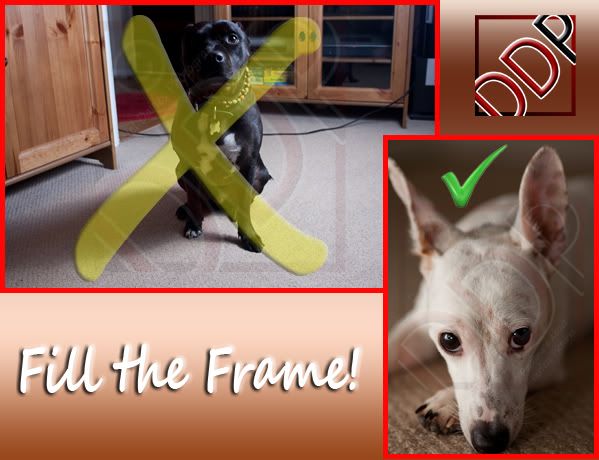
2. DON'T BLAST WITH FLASH.
Unlike humans, Dogs & Cat's don't suffer with "red eye" where the light from a camera's flashgun reflects back to the camera as a glowing, demonic red, but they do suffer with "green eye". Worse still, many have silky, shiny fur which will also badly reflect the light from a camera flash. Rather than shooting indoors or at night, try and capture your pet outdoors in normal daylight. Don't pick the middle of the day when the light is overhead and strong, but morning or evening, or even an overcast day will help you best.
This way, the flash use will be at a mimimum (remembering my advice about "fill flash" here), the shine and "green eye" will be controlled, and your photograph will be more natural and much more pleasing.
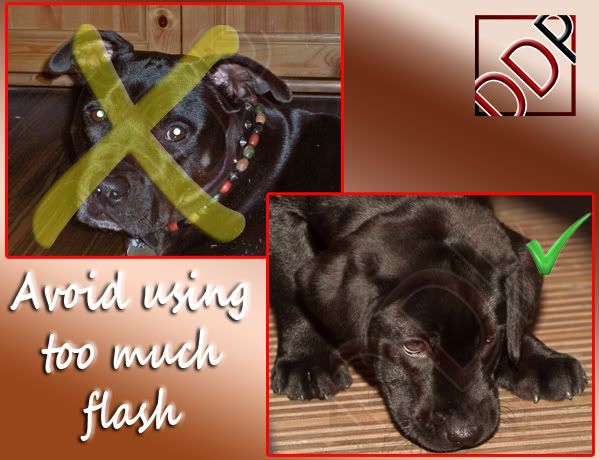
3. GET DOWN TO THEIR LEVEL.
Shooting your pet whilst you stand up will mean that you're looking down on them. Unless (like in the example below) you are looking to emphasise their diminuative stature, then you should try and shoot from their eye level. See the world from their perspective and you'll get a more natural portrait of your animal.
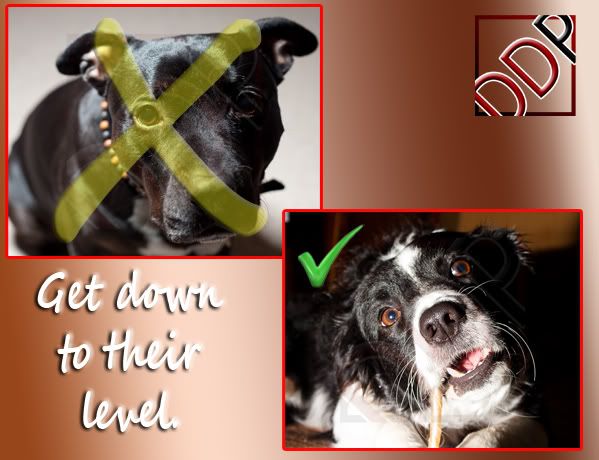
4. FOCUS ON THE EYES.
Every good portrait must have the eyes in focus. This is true of humans or animals. An added complexity of many animals over humans is the length of their snouts.
Autofocus cameras generally try to focus on the closest thing to the lens. In the case of dogs, horses or here donkeys! their long faces mean that this is often the tip of the nose.
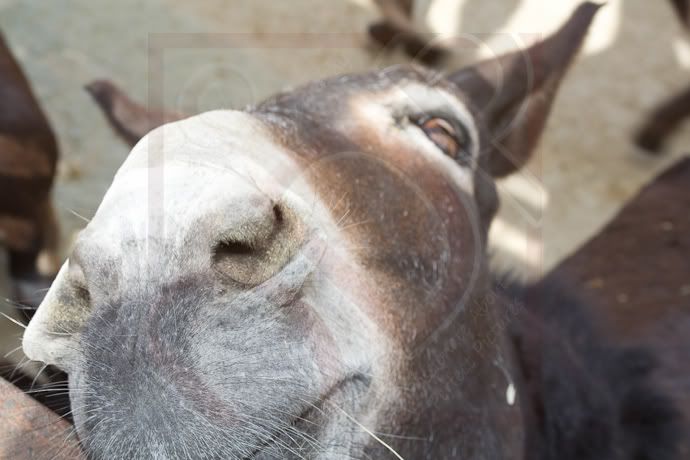
To avoid this you need to learn the focus/recompose trick. When looking through the viewfinder, or on the back screen of your camera, the points of focus are generally shown as small boxes or crosses. When the camera focuses, these light up in red. If this is focussing on the snout then hold the focus point (cross or box) over the animals eyes. Half press down the shutter. This will "lock" the focus at that distance. You can then "recompose" the picture by slightly moving the camera so that it is framed as you wish. Without lifting your finger, fully press the shutter and the picture will be taken, the eyes will be in focus, and the snout pleasantly blurred.
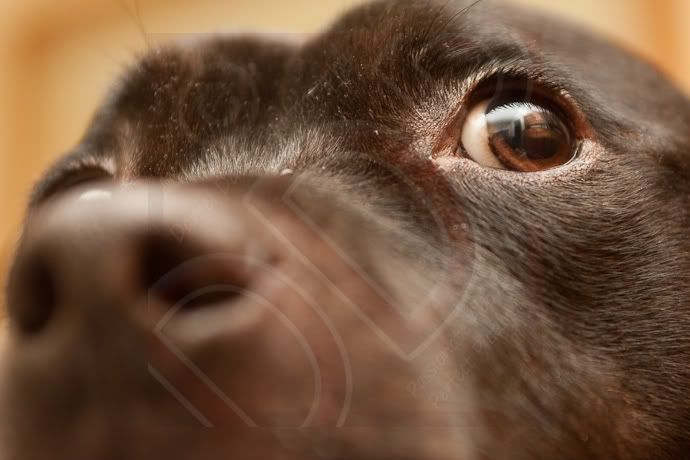
(See here for a more detailed explanation of this trick)
5. CONSIDER THE BACKGROUND
Try and photograph your pets against a background that is complimentary to their colouring. Your eyes should be drawn to the pet itself, and bright spots in the background or similar will distract the viewer away from the pet.
In the example below, with the black dog, the eyes are drawn to the video recorder in the background and away from the animal itself. The complimentary, evenly coloured background in the image of the blue marl collie contains nothing to distract from her friendly face.
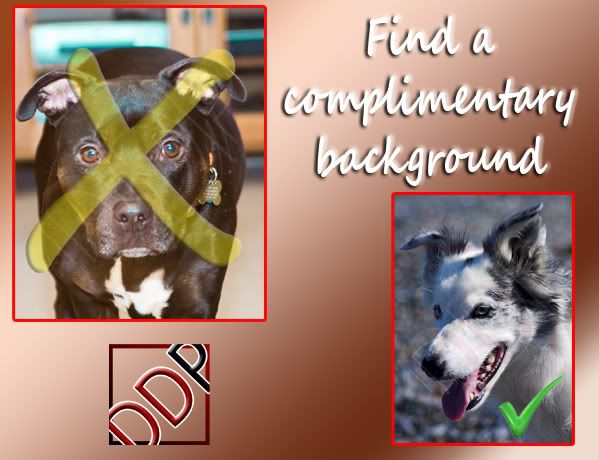
7. CAPTURE THEM BEHAVING LIKE ANIMALS.
If you ask your children to sit still, bolt upright and force a grin, you'll get some horribly staid, obviously posed, almost starched shots. The same is true for portraits of your pet. If you want to capture an image that really says something about the animal, then why not try and catch it "in action". Photograph it doing what it loves to do. Running, chasing a ball, stalking it's toys are all examples of perfect opportunities for greating great memories. Remember you can take as many shots as you like, delete all the duff ones and keep the one or two that really do work. These are the pictures that will most make you smile when you look back in years to come.
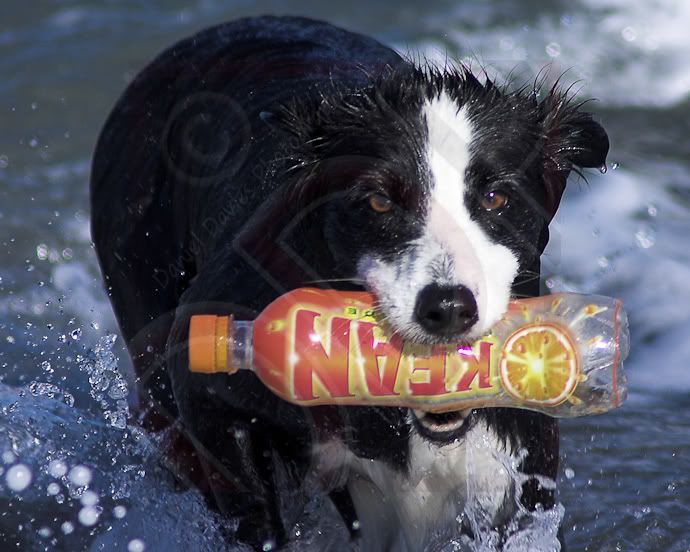
I hope that you've found these helpful. Put these tips into practice and you'll be surprised at how much they can improve your photography. Use the comments below to drop me a message linking to any photographs you take that follow these tips. I'd love to see them.
Keep snapping!
All the best.
Dan

No comments:
Post a Comment